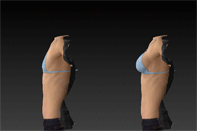As 2025 approaches, it’s the perfect time to focus on looking and feeling your best for the year ahead! Embracing non-surgical treatments can be a fantastic way to refresh your confidence and achieve a glowing, revitalized look without having to undergo an invasive procedure.
Whether you’re gearing up for new beginnings, setting resolutions, or simply prioritizing self-care, the New Year offers an opportunity to put yourself first. Picture entering 2025 with a renewed sense of confidence, ready to take on whatever comes your way.
Let’s explore some amazing non-surgical treatments that we offer at our Aya Med Spa location, that can help you start the New Year feeling and looking your very best!
Non-Surgical Procedures and Treatments
As we step into 2025, it’s the perfect time to explore non-surgical treatments that can have you looking and feeling your best with minimal downtime. These quick and effective options are ideal for starting the New Year with a refreshed and confident look.
The beauty of non-surgical treatments is their convenience, most can be done in just a few hours, allowing you to return to your regular routine right away. Why not kick off 2025 by putting yourself first and embracing the confidence that comes with looking your best?
Keep in mind though, non-surgical options are not going to provide you with the same results as traditional surgery, but if you’re looking for a great way to enhance your look for all the family time this holiday season, these non-surgical procedures can offer great results.
Injectable Fillers
Injectable fillers, like Botox and dermal fillers are a great way to soften up wrinkles and age lines on your face.
A small needle is used to inject these fillers just under the skin in your face to help add subtle volume to the areas affected by age. The lines and wrinkles in these areas will then smooth over giving you a more youthful look.
Injectable fillers are a great way to rejuvenate your face without having to have traditional surgery. The procedure only takes a short amount of time and in most cases some results can be seen almost instantly.
You’ll be able to return to your normal lifestyle as soon as you leave our office. It’s quick, painless, and the results can last for months.
Microneedling
Microneedling uses tiny needles to create micro-injuries in your skin, which kickstart your body’s natural healing process. This stimulates collagen production, leaving your skin looking smoother, plumper, and more radiant.
Microneedling is a simple and effective way to improve your complexion without the need for surgery. The procedure is quick, with minimal downtime, and you’ll start noticing improvements in just a few days.
You can easily fit a microneedling session into your busy schedule and get back to your normal activities right away. It’s safe, effective, and perfect for giving your skin that healthy glow!
Skin Tightening
Our Aya Med Spa location offers skin tightening which uses ultrasounds to lift, tighten, and tone your sagging skin. It works by helping to stimulate collagen growth in your body which will help your skin appear smooth and rejuvenated.
As with injectable fillers, this procedure requires almost no downtime after the treatment and is virtually painless. Patients may appear flush immediately after the procedure, in the areas that were treated, but you can return to your normal lifestyle right away.
Skin Resurfacing Laser Treatments
Laser treatments have been making a big impact in the world of non-surgical procedures over the last few years, and for good reason. Lasers can be used to help resurface the skin to help treat wrinkles, surface irregularities, and uneven pigmentation.
If you’re looking to clear up the skin on your face for the new year, this is a great option.
CoolSculpting
CoolSculpting is a fantastic non-surgical option for reducing stubborn pockets of fat that don’t seem to go away, no matter how much you diet or exercise.
This treatment uses controlled cooling to target and freeze fat cells under the skin, which your body naturally eliminates over time. It’s perfect for areas like the abdomen, love handles, or even under the chin.
CoolSculpting is a quick and easy way to shape and contour your body without the need for invasive surgery. The procedure is comfortable, takes about an hour per session, and there’s no downtime required.
You can head back to your daily routine right after the treatment. The best part? Results develop gradually over a few weeks, leaving you looking slimmer and feeling more confident as you move into 2025.
Get Great Looking Skin for 2025
If you’re ready to make some positive changes, now is the perfect time! Whether you want to start 2025 feeling refreshed and confident or simply want to look rejuvenated for your daily routine, these treatments are a fantastic way to boost your self-confidence and help you feel your best.
Start the New Year off right by embracing a revitalized you, because there’s no better time to prioritize yourself than now!
If you have any questions about the surgical and non-surgical procedures that we offer at Dr. Adams Plastic Surgery and the AYA Med Spa, don’t hesitate to contact us today – (469) 778-4005.















